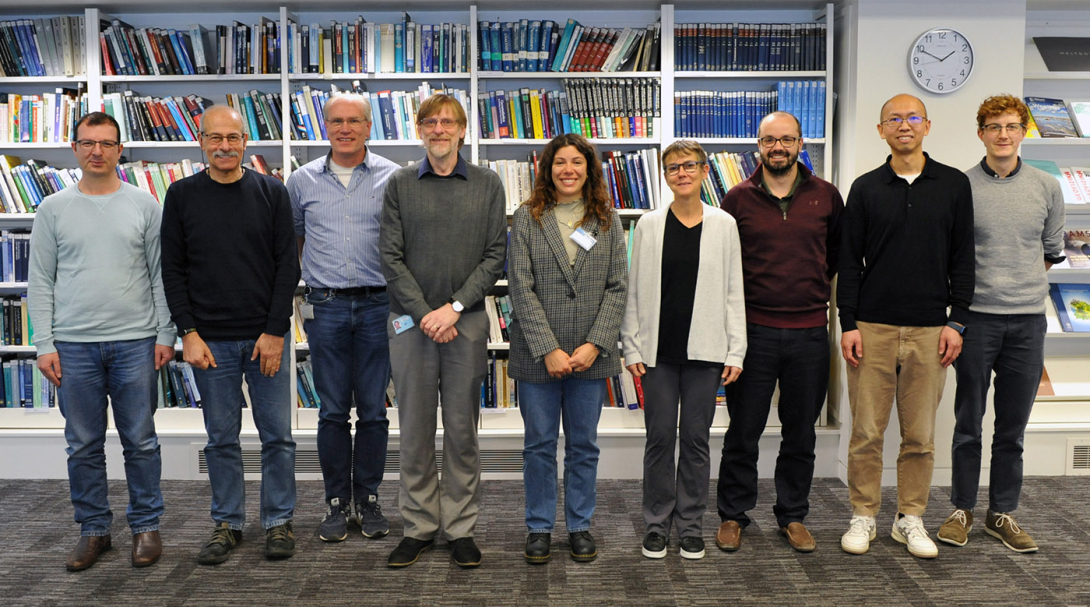The exploitation of new satellite observations in ECMWF's coupled data assimilation system has recently received a strong boost through the start of a project called Data Assimilation and Numerical Testing for Copernicus Expansion Missions (DANTEX). DANTEX is a three-year initiative funded by the European Space Agency (ESA) to pave the way for the advanced exploitation of upcoming satellite data, in particular from the Copernicus Expansion Missions (https://www.esa.int/Applications/Observing_the_Earth/Copernicus/Copernicus_Sentinel_Expansion_missions). Four new ECMWF scientists participate in the project, which started on 18 November 2024 at ECMWF in Reading, UK.
DANTEX will develop novel ways to use so-called interface observations from a range of satellite instruments. These are observations that are sensitive not only to the atmosphere, but also to other aspects of the Earth system, such as the ocean, sea ice, snow, or land. Consistent exploitation of such observations across different parts of the Earth system in our coupled data assimilation system is a key strategic development at ECMWF. DANTEX is expected to become an important accelerator for such developments and to tackle a range of scientific and technical challenges, ensuring we get the best benefit from existing and upcoming future European satellites for numerical weather prediction and climate reanalyses.

Scope
Developments in DANTEX will target one existing and three future Earth Observation missions from ESA, adding new observations of unprecedented quality and breadth for Earth system analysis, modelling and prediction. Initially, efforts will target the cryosphere, land, and ocean waves. Cryosphere aspects will be enhanced through the Copernicus Imaging Microwave Radiometer (CIMR, a passive radiometer observing lower microwave frequencies) and the Copernicus polaR Ice and Snow Topography ALtimeter (CRISTAL) mission. The former will provide, for instance, high-resolution information on sea-ice concentration, whereas the latter will add information on the thickness of sea ice and snow. By combining the two, we expect to see significant advances in our sea-ice analysis, as well as other cryosphere aspects. Our analysis of land temperature will benefit from the Land Surface Temperature Monitoring (LSTM) instrument, a passive radiometer observing the visible, near-infrared, and infrared parts of the spectrum. These three missions (CIMR, CRISTAL and LSTM) are Copernicus Expansion Missions. They are part of the Earth observation component of the European Union's space programme, expected to be launched late in the 2020s or early 2030s. In addition, DANTEX will enhance the representation of ocean waves and hence ocean/atmosphere interactions through better exploitation of data from the Synthetic Aperture Radar (SAR) on the existing Sentinel-1 mission (https://sentiwiki.copernicus.eu/web/s1-mission).

Raw satellite observations
A key aspect of DANTEX is that, for the Copernicus Expansion Mission instruments, we will use data as close as practical to raw observations ('level 1 data'), rather than retrieved products. This will ensure that we can maximise synergies between different observations and produce consistent initial conditions for the different components of our coupled Earth system model. To achieve this, we will develop and adapt forward models for these observations. These are models that map the Earth system model data to the satellite observations. DANTEX will employ state-of-the-art methods to facilitate this, including machine learning elements that are particularly promising to represent complex processes involved in surface radiative transfer. The coupled Earth system assimilation will build on the latest developments for sea ice and sea-surface temperature that will be implemented in Cycle 50r1 of ECMWF's Integrated Forecasting System (IFS). Developments in DANTEX will initially use existing observations as a proxy wherever possible. While these have significant weaknesses compared to the upcoming instruments, they nevertheless enable detailed development and testing of the scientific and technical capabilities prior to launch. The science developed and tested under DANTEX will enable fuller exploitation of all four missions by the weather and climate community, maximising their societal benefits.
